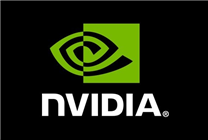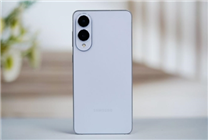NVIDIA Seeks Increased GDDR7 Production from Samsung Amid AI GPU Developments
Summary:
- NVIDIA has requested Samsung to double its GDDR7 video memory chip production capacity.
- This decision is linked to the upcoming B40 AI GPU, specifically designed for the Chinese market.
- Financial projections suggest NVIDIA’s GDDR7 orders could be worth approximately 1.026 billion yuan.
In a recent development reported by Fast Technology, NVIDIA has made significant strides aimed at expanding its production partnerships, particularly with Samsung. The company has proposed that Samsung increase its production capacity for GDDR7 video memory chips. This initiative is closely associated with NVIDIA’s latest artificial intelligence GPU, the B40, which is specifically tailored for the Chinese market.
Challenges in Revenue
NVIDIA faced a challenging second quarter, notably failing to generate any revenue from its China-specific H20 GPU due to U.S. export control policies. Following the release of the financial results, CEO Jensen Huang indicated the company is in discussions with government authorities to secure licenses for deploying the next generation of AI GPUs in China. This engagement hints at NVIDIA’s determination to navigate regulatory hurdles and continue its operations in the global tech market.
The new B40 GPU is expected to utilize GDDR7 video memory rather than the high-bandwidth memory (HBM) that has been historically used. The shift to GDDR7 is a strategic move to avoid complications associated with U.S. export restrictions that currently affect HBM technology.
Financial Implications
Industry sources estimate that NVIDIA’s orders for GDDR7 chips could reach approximately 200 billion won, which translates to around 1.026 billion yuan. This substantial order represents a rare opportunity for Samsung to solidify its position in the semiconductor market, particularly as the company has previously struggled to secure HBM orders from NVIDIA.
Samsung’s efforts to penetrate NVIDIA’s HBM supply chain have been notable, with reports suggesting that the company is actively trying to lower product prices to enhance its competitiveness. Furthermore, Samsung has been supplying HBM3e video memory to NVIDIA, which might be utilized in NVIDIA’s upcoming Blackwell Ultra series.
Samsung’s Strategic Moves
As NVIDIA pivots towards GDDR7 memory, Samsung finds itself in a favorable position. The ability to double production capacity for these chips not only enhances Samsung’s visibility within the market but also establishes a crucial partnership with one of the leading players in AI technology. This collaboration is particularly significant in light of recent industry trends favoring AI applications, where cutting-edge graphics processing is essential.
NVIDIA’s partnership with Samsung also opens avenues for innovation in GPU technology, positioning both companies to capitalize on new market demands. As AI algorithms and applications continue to evolve, the need for faster and more efficient memory solutions becomes increasingly critical.
Conclusion
The ongoing alliance between NVIDIA and Samsung highlights an evolving landscape in the semiconductor and artificial intelligence markets. By focusing on GDDR7 production to support the B40 AI GPU, both companies are poised to leverage upcoming opportunities while navigating regulatory environments. This collaboration not only underscores Samsung’s resilience in tech manufacturing but also signals NVIDIA’s adaptability in maintaining its competitive edge amid challenges.
As the market continues to evolve, the tech industry will watch closely to see how this partnership unfolds and the impact it will have on AI and GPU technology in the coming years. With increased production capabilities, both companies are likely to play pivotal roles in shaping the future of artificial intelligence applications globally.







